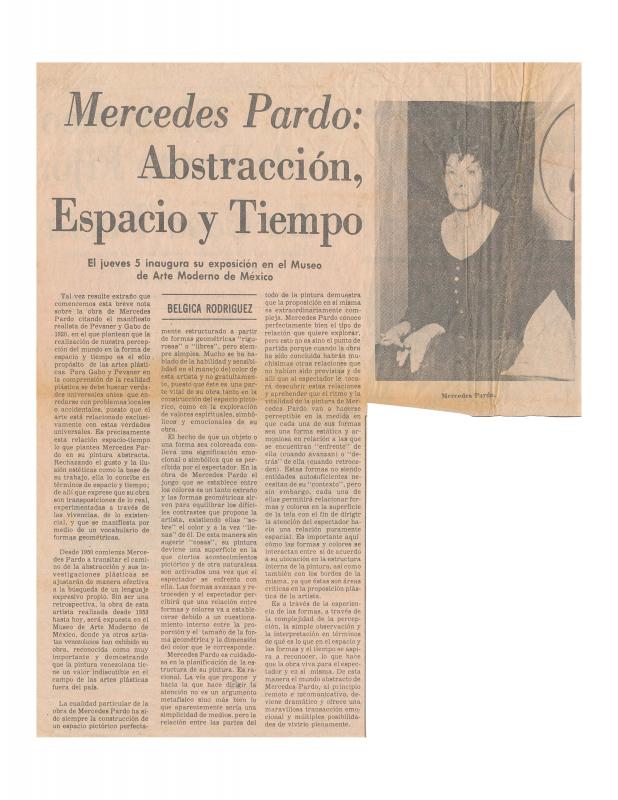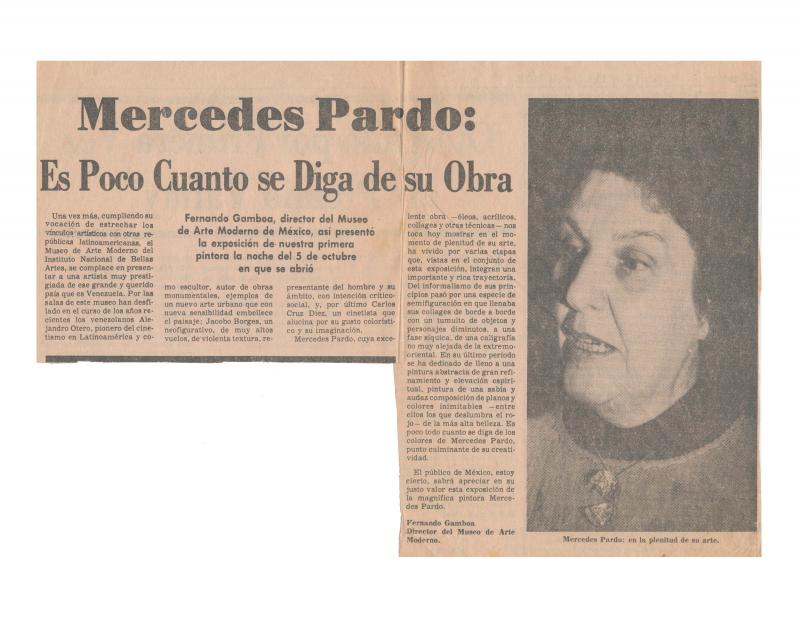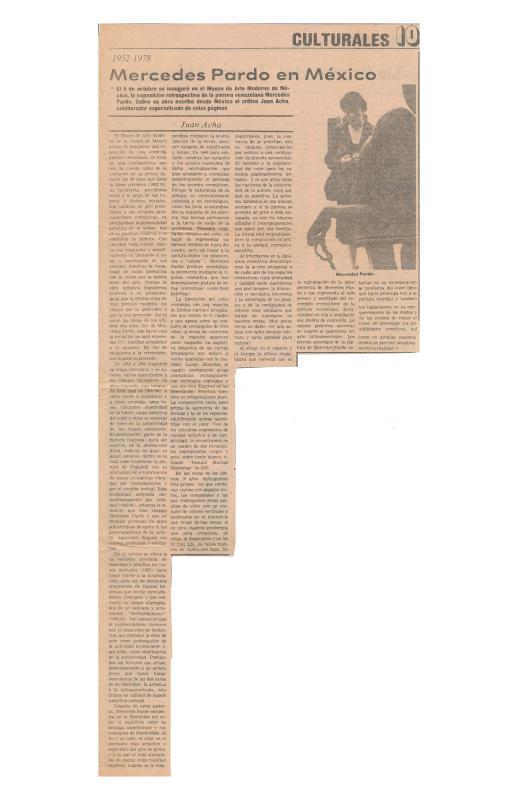This article presents the pictorial work of Mercedes Pardo (1921–2005) at the MAM (Museo de Arte Moderno) in Mexico City under the title Exposición de la afamada pintora venezolana Mercedes Pardo: 50 óleos, acrílicos, collages y otras técnicas held in October 1978. Many of the works on display were previously shown at the GAN (Galería de Arte Nacional) in Caracas as Del taller de Mercedes Pardo hoy (July/August 1978) and the selection of the Mexican MAM’s show was later displayed in the Venezuelan capital city as Color: Piel, Presencia Meditada: Mercedes Pardo, also at the GAN. It featured fifty works from the early 1950s to her most recent production: all of them abstract works, since she had already abandoned figuration in 1950.
In this brief article, the author brings forth a few recurring themes in the literature on Pardo. The artist’s views on biennials as double-edged swords can be positioned in the broader debate on the commodification of art, and her concerns for the fast pace of the art market and how it influences artists, especially the young ones in search for visibility. A quote by Pardo in this article highlights the wrongful nexus of new contemporary art in her country with just Cinetismo. By 1978, this Venezuelan reading of Kineticism was at its peak of public commissions, and Pardo’s work was itself often mistaken for being part of that narrative. Although her idea of color as a creative tool to play with pictorial space is in fact a common trait that Pardo shares with Kinetic trends, there is a crucial difference with Kinetic Art in her preference for a flat, two-dimensional support and her concentration focusing on the instability of the picture plane. Kinetic works, on the other hand, often rely on three-dimensional supports as well as depend on the displacement of the viewer in front of the work. In this text, Pardo mentions some figurative and expressionist young artists in her country, as well as those who approach geometry from a conceptual insight. A preoccupation as such with young artists is an ongoing subject in Pardo’s literature and is grounded in her pedagogical experiences in different institutions: Banco del Libro, Fundación Mendoza, and the ateliers of the Museo de Bellas Artes in Caracas.
For other reviews of this exhibition, see, in the ICAA Digital Archive: Bélgica Rodríguez, “Abstracción, Espacio y tiempo” (doc. no. 1331443); Fernando Gamboa, “Mercedes Pardo: Es poco cuanto se diga de su obra” (doc. no. 1331475); and Juan Acha, “Mercedes Pardo en México”, (doc. no. 1331459).



